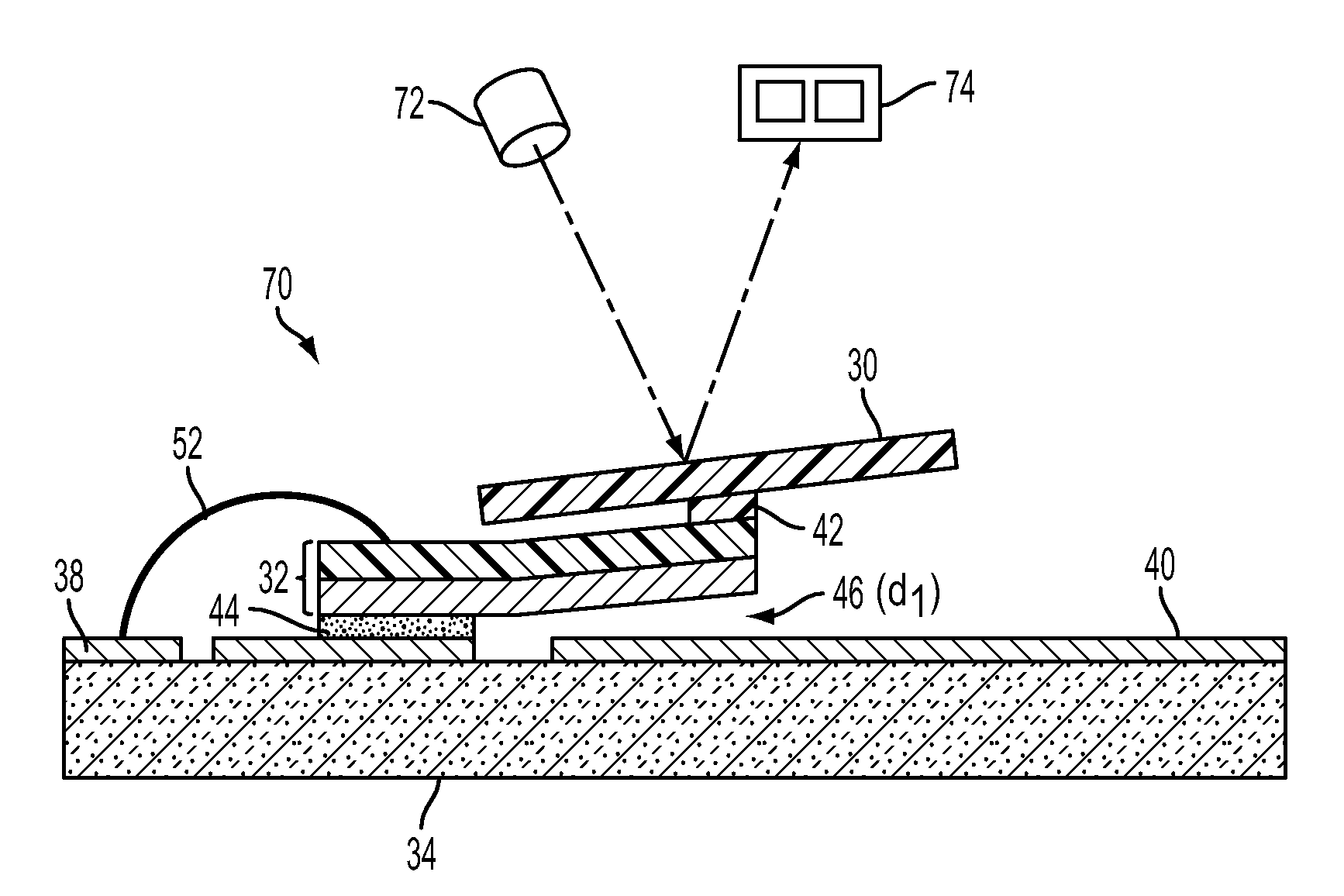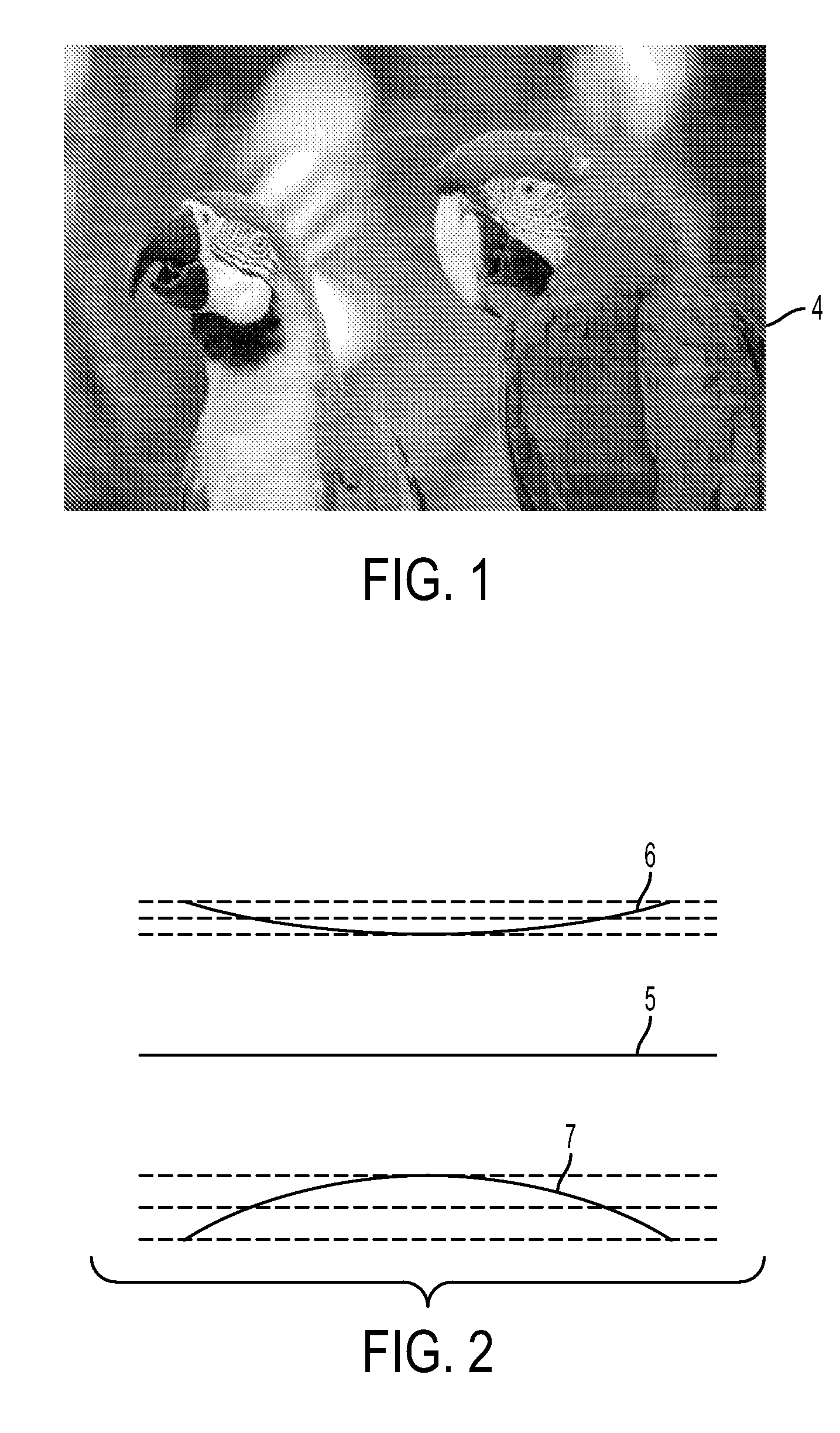Agile beam steering mirror for active raster scan error correction
a technology of raster scan and steering mirror, applied in the field of raster output scanner, can solve the problems of serious deformation of print quality, bow errors less than 10 microns, and errors in the quality of the scan line on the photoreceptor, and achieve the effect of eliminating higher-cost optical compensating elements and high bandwidth
- Summary
- Abstract
- Description
- Claims
- Application Information
AI Technical Summary
Benefits of technology
Problems solved by technology
Method used
Image
Examples
Embodiment Construction
[0044]Various embodiments of an agile mirror device for ROS systems according to the present invention will now be described, as well as example methods of manufacturing and components employed in the operation of same. It will be understood that the following are merely examples of various aspects of the present invention, and provide a framework for an understanding of the scope of the present invention.
[0045]With this in mind, shown in FIG. 3A is a ROS system 10 which includes a light source such as laser 12, the agile beam steering mirror assembly 14 according to the present invention, a rotating polygon mirror assembly 16, scan optic assembly 18, mirror 20, and photoreceptive drum 22. Following the path of light emitted from laser 12, a light beam is incident on agile beam steering mirror assembly 14 which adjusts the beam position as described further below. The beam is directed by the agile mirror system 14 to the rotating polygon mirror 16, which causes the beam to move in t...
PUM
 Login to View More
Login to View More Abstract
Description
Claims
Application Information
 Login to View More
Login to View More - R&D
- Intellectual Property
- Life Sciences
- Materials
- Tech Scout
- Unparalleled Data Quality
- Higher Quality Content
- 60% Fewer Hallucinations
Browse by: Latest US Patents, China's latest patents, Technical Efficacy Thesaurus, Application Domain, Technology Topic, Popular Technical Reports.
© 2025 PatSnap. All rights reserved.Legal|Privacy policy|Modern Slavery Act Transparency Statement|Sitemap|About US| Contact US: help@patsnap.com



